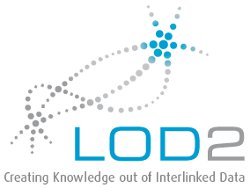Results and Slides
- Session 1: Slides – NIF 2.0 Tutorial: Content Analysis and the Semantic Web – Sebastian Hellmann
- Session 2: – Feiyu Xu
- Session 3: – Feiyu Xu
- Session 4: Interactive session
Content Analysis and the Semantic Web (English Tutorial)
- All 4 sessions of the tutorial are in English as part of a German conference. Please see Content Analysis and the Semantic Web
- Registration is open
- Venue / Travel
- Requirements: This advanced tutorial assumes basic familiarity with NLP and Semantic Web methods. Each participant is required to bring a laptop / personal computer.
09:00 – 10:30 Content Analysis 1: Semantic Web and NLP
This tutorial is held by Sebastian Hellmann from the NLP2RDF Group at AKSW:
The NLP Interchange Format (NIF) is an RDF/OWL-based format that aims to achieve interoperability between Natural Language Processing (NLP) tools, language resources and annotations. NIF consists of specifications, ontologies and software (overview), which are combined under the version identifier “NIF 2.0″. Links:
11:00- 12:30 Content Analysis 2: Relation Extraction
This tutorial is held by Feiyu Xu from the Language Technology Lab at DFKI
In this tutorial, we will introduce the basic concepts of information extraction and relation extraction. Furthermore, we will explain the motivation of the machine learning methods for relation extraction task. As an example, we will demonstrate the DARE (domain adaptive relation extraction) system (http://dare.dfki.de) which shows how to learn relation extraction rules automatically from free natural language texts annotated with named entity and parsing information.
12:30 – 14:00 Lunch included
14:00 – 15:30 Content Analysis 3: Opinion Mining
This tutorial is held by Feiyu Xu from the Language Technology Lab at DFKI
In this tutorial, we will introduce the basic concepts of opinion mining and sentiment analysis. The addressed R&D topics are 1) development of linguistic resources for opinion mining, namely, automatic acquisition of sentiment words or subjective words and their orientations; 2) opinion mining at document or paragraph level: simple extraction of opinion holder, opinion target, subjectivity classification or sentiment classification; 3) opinion mining at feature level: identification of features (e.g., components of a car), construction of ontology for features, extraction of sentiments towards features, 4) comparative opinion mining: identification comparative sentences and extract comparative relations.
16:00 – 17:30 Content Analysis 4: Interactive session
Participants are invited to present their use cases, data, challenges and problems in lightning talks at the beginning of the session followed by a discussion about solutions and best practices.

